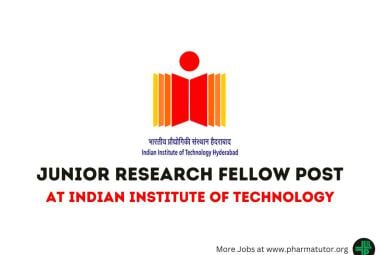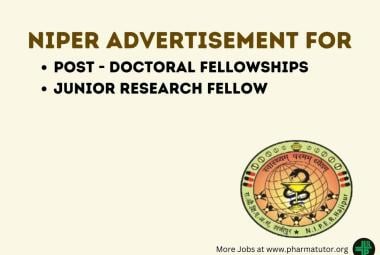




March 2017 ARTICLE LIST >>
PharmaTutor (March - 2017)
ISSN: 2347 - 7881
(Volume 5, Issue 3)
Received On: 20/08/2016; Accepted On: 23/11/2016; Published On: 01/03/2017
AUTHORS:
Hardik Rana*, Bhargav Vaghasiya, Mansi Dholakia
Department of Pharmaceutics,
Anand Pharmacy College,
Anand, Gujarat, India.
hardikrana1439@gmail.com
ABSTRACT: The objective of present study was to enhance the solubility of poorly soluble drug Ibuprofen using spherical crystallization technique. The potential agglomerates were prepared by addition of different concentration of polymer selected on the basis of Phase solubility study. Spherical agglomerates were prepared using diethyl ether as bridging liquid by neutralizing technique, spherical agglomeration technique, Quasi emulsion solvent diffusion technique. Spherical agglomerates were evaluated for morphology, production yield, drug content, particle size and dissolution behaviour compared with pure drug. The result of phase solubility studies revealed that there is enhancement of solubility by PEG 4000. Rod shaped crystals of pure drug converted to spherical was confirmed by optical microscopy. The dissolution of agglomerates of optimum batch exhibited 88.24% release compare to 47.18% of pure drug within 60 minute. This study demonstrated that spherical crystallization technique can be considered as a suitable alteration of granulation. Ibuprofen spherical agglomerates can be prepared with PEG 4000. It exhibited excellent physicochemical, solubility, dissolution rate in comparison with pure drug. Among other spherical crystallization technique, QESD proved to be excellent technique for enhancement of solubility and dissolution.
How to cite this article: Rana H, Vaghasiya B, Dholakia M;Solubility Enhancement of poorly Water Soluble Drug by Spherical Crystallization Technique; PharmaTutor; 2017; 5(3); 31-36
[ABSTRACT WITH CITATION] [VIEW AS HTML]

REFERENCES:
1. Martinez M, Augsburger L, Johnston T, Jones W; Applying the biopharmaceutics classification system to veterinary pharmaceutical products. Part I. Biopharmaceutics and formulation considerations; Adv Drug Deliv Rev.; 2002; 54; 805–824.
2. Ward G.H., Schultz, R.K.; Process induced crystallinity changes in Albuterolsulfate and its effect on powder physical stability; Pharm. Res.; 1995; 12; 773–779.
3. Tur K.M., Chang H.S., Baie, S.; Use of bioadhesive polymer to improve the bioavailability of griseofulvi;. Int. J. Pharm.; 1997;148; 63–71.
4. Quintanar-Guerrero D., Allemann E., Fessi, H., Doelker E.; Preparation techniques and mechanisms of formation of biodegradable nanoparticles from preformed polymers; Drug Dev. Ind. Pharm,; 1998; 24; 1113–1128.
5. Hu J., Johnston K.P., Williams R.O.; Spray freezing into liquid (SFL) particle engineering technology to enhance dissolution of poorly soluble drugs: organic solvent versus organic/aqueous co-solvent systems; Eur. J. Pharm. Sci.; 2003; 20; 295–303.
6. Moneghini M., Kikic I., Voinovich D., Perissutti B., Alessi P., Cortesi A., Princivalle F., Solinas D.; Study of the solid state of carbamazepine after processing with gas anti-solvent technique; Eur. J. Pharm. Biopharm.; 2003; 56; 281–289.
7. Kawashima Y., Cui F., Takeuchi H., Niwa T., Hino T.,Kiuchi K.; Improvements in flowability and compressibility of pharmaceutical crystals for direct tabletting by spherical crystallization with a two-solvent system; Powder Technol; 1994b; 78; 151–157.
8. Kawashima Y., Handa T., Takeuchi H., Okumura M.,Katou H., Nagata O.; Crystal modification of phenytoin with polyethylene glycol for improving mechanical strength, dissolution rate and bioavailability by a spherical crystallization technique; Chem. Pharm. Bull;, 1986; 34; 3376–3383.
9. Sano A., Kuriki T., Kawashima Y., Takeuchi H., HinoT., Niwa T.; Particle design of tolbutamide by spherical crystallization technique. V. Improvement of dissolution and bioavailability of direct compressed tablets prepared using tolbutamide agglomerated crystals; Chem. Pharm. Bull;, 1992; 40; 3030–3035.
10. Guillaume F., Guyot-Hermann A.M., Guyot J.C.; Spherical crystallization of meprobamate II; Farmaco.; 1993; 48; 473–485.
11. Di Martino P., Barthelemy C., Piva F., Joiris E., Palmieri G.F., Martelli S.; Improved dissolution behavior of fenbufen by spherical crystallization; Drug Dev. Ind. Pharm.; 1999; 25; 1073–1081.
12. Akbuga J.; Preparation and evaluation of controlled release furosemide microspheres by spherical crystallization; Int. J. Pharm.; 1989; 53; 99–105.
13. Ribardiere A., Tchoreloff P., Couarraze G., Puisieux F.; Modification of ketoprofen bead structure produced by the spherical crystallization technique with a two-solvent system; Int. J. Pharm.; 1996; 144; 195–207.
14. Kawashima Y.; Part 1. New processes. Application of spherical crystallization to particulate design of pharmaceuticals for direct tabletting and coating and new drug delivery system. In: Chulia, D., Deleuil, M., Pourcelot, Y. (Eds.); Powder Technology and Pharmaceutical Process; Elsevier; 1994a; 493–512.
15]Morishima K et al ; Micromeritic characteristics and agglomeration mechanisms in the spherical crystallization of bucillamine by the spherical agglomeration and emulsion solvent diffusion method; Powder Technology; 1993; 76 (1); 57-64.
16. Miralles, M.J., McGinity, J.W. and Martin, A.; Combined water-soluble carriers for coprecipitates of tolbutamide; J. Pharm. Sci.; 1982; 71; 302-304.
17. Kawashima Y et al; Parameters determining the agglomeration behavior and the micromeritic properties of spherically agglomerated crystals prepared by the spherical crystallization technique with miscible solvent system; international journal of Pharmaceutics; 1995; 119(2); 139-147.
18. Paradkar A. R., Pawar A.P. et al; Spherical crystallization of Celecoxib; Drug Development and Industrial Pharmacy; 2002; 28(10).
19. Martino P et al; Improved dissolution behavior of Fenbufen by spherical crystallization Drug Development and Industrial Pharmacy; 1999; 25(10).
20. Kachrimanis K et al; Spherical crystal agglomeration of ibuprofen by the solvent change technique in the presence of methacrylic polymers; Journal of Pharmaceutical Sciences; 2000;89 (2); 250-259.
21. Jbilou M. et al; Ibuprofen agglomerates preparation by phase separation; Drug Development and Industrial Pharmacy; 1999; 25(3).
22. Keraliya R, Soni T, Thakkar V, Gandhi T.; Effect of solvent on Crystal Habit and Dissolution behaviour of Tolbutamide by Initial Solvent Screening; Dissolution Technologies; 2010; 16-21.
23. Chourasia M.K., Jain A., Jain N., Vaidya S, Jain S.K.; Utilization of spherical crystallization for preparation of directly compressible materials; Indian Drugs; 2004; 41; 319–329.
















.png)

